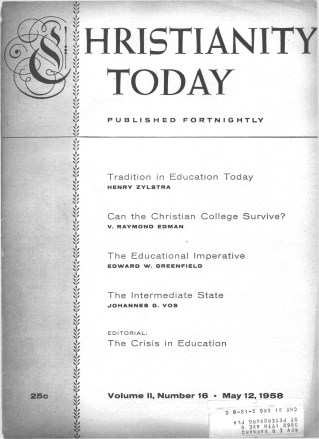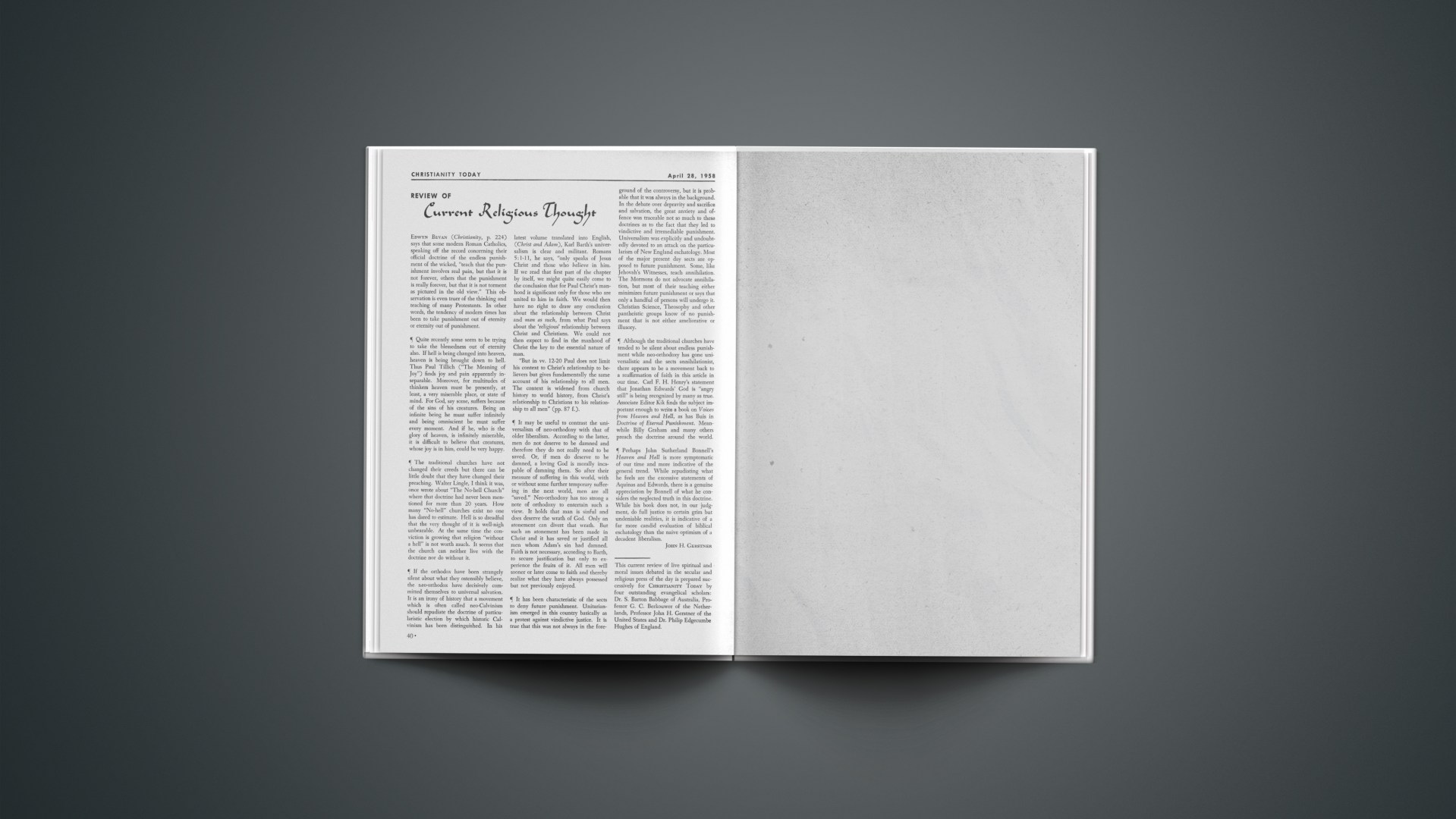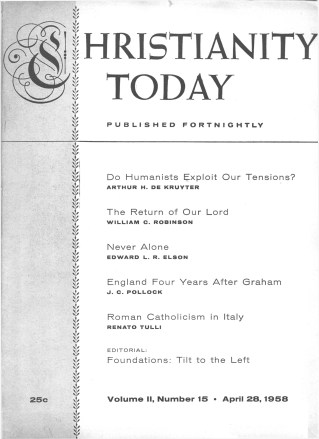The intermediate state is the state of the human soul between death and the resurrection. Scripture represents the intermediate state as provisional, constituting neither the ultimate bliss of the saved nor the ultimate doom of the lost. It forms, in effect, a transition between life within history and the ultimate life in eternity. But this basic fact is often ignored and the intermediate state of the Christian dead is spoken of in terms Scripture reserves for the life after resurrection.
State Of Quiet Consciousness
All theories of “soul sleep” are excluded by the plain teachings of Scripture. The term “sleep,” as a description of death, is used in the case of Christians only. It refers either to the rest of the body after death, or is used metaphorically of the soul to imply a state of peaceful rest. Scripture is clear that consciousness continues after death; “to be absent from the body is to be present with the Lord” (2 Cor. 5:8). As we are conscious of the body’s presence in this life, we shall be conscious of the Lord’s presence in the intermediate state. That the intermediate state of the redeemed is a state of quiet rest is shown by Rev. 14:13 (“Blessed are the dead which die in the Lord … that they may rest from their labors.…”) The same context says of the wicked: “they have no rest day nor night …” (14:11).
It is only through the instrumentality of the body that man is in touch with the earthly environment—the realm of nature and the world of human society. In the abnormal state of not having a body, the connection cannot exist. Whatever of objective reality there may be in spiritism, it cannot involve a real communication between the dead and the living. If the debated case of Saul at Endor involved a real appearing of Samuel, this must be regarded as an exception brought about by the will of God, not by the action of the woman with a familiar spirit. Between death and the resurrection, the human soul is completely separated from the physical world and from human society in this world. After death man is no longer a citizen of history.
State Of Moral Perfection
Scripture speaks of “the spirits of just men made perfect” (Heb. 12:23) and of “holiness, without which no man shall see the Lord” (Heb. 12:14). In harmony with this, the Westminster Shorter Catechism affirms that “The souls of believers are at their death made perfect in holiness.…” This scriptural truth rules out both the notion of purgatory and that of a second or continued probation after death. The body is not the seat of sin; yet in the instant of separation between soul and body, the process of sanctification is miraculously completed. This should not be difficult to believe, for the scriptural idea of sanctification is that it is supernatural from its very beginning (the new birth). There is no reason why God should not bring a gradual supernatural process to a sudden completion by an instantaneous supernatural act.
State Of Metaphysical Incompleteness
All tendencies to regard the intermediate state as the ideal condition are unscriptural. It is represented in Scripture as more desirable than the condition of frustration and struggle which characterizes the present life, and yet much less desirable than the completed blessedness of the resurrection. It is a “being unclothed,” a being “found naked” (2 Cor. 5:3, 4). Paul hoped to avoid it, if possible, by living on earth until the Lord’s second coming, so that he would not be “unclothed” (i.e., a disembodied soul). Man is a composite being consisting of body and soul (or mind), and both are necessary to his normal existence. The lack of the body in the intermediate state renders man in that state deficient and abnormal. In the intermediate state, man lacks something which he must have to be truly normal and completely happy; hence Scripture represents the intermediate state as a state of waiting (Rev. 6:11; Heb. 11:39, 40). The complete metaphysical perfection of man comes only by the resurrection of the body and its union with the completely sanctified soul (Rom. 8:23–25; 1 Cor. 15:50–54).
Relation To Time And Eternity
Recent researches in the comparatively new science of parapsychology seem to indicate that the mind of man, unlike his body, is not always necessarily geared to the time-sequence which makes up history. “Precognition, often recorded as happening spontaneously over considerable gaps of time, is now demonstrable statistically for a matter of seconds” (L. W. Grensted, The Psychology of Religion, New York, 1952, p. 165). There seems to be an increasing body of credible, carefully tested evidence that the principles of time-sequence and causation, which are universally valid in the physical world, are not always valid for the functioning of the mind.
Our faith, of course, is based on Scripture, not on researches in parapsychology. It may be said, however, that Scripture nowhere teaches that the time-sequence which we call history applies to other spheres of existence than the physical universe. Rather, Scripture seems to imply the contrary. J. Stafford Wright has suggested that in the intermediate state, the human mind will be geared to a different kind of time-scale from that of the physical universe, though we cannot guess what it might be (Man in the Process of Time, Eerdmans, 1956, p. 179). Scripture indeed suggests this. The duration between their martyrdom and their resurrection is represented to the souls under the altar as “a little season” (Rev. 6:11), yet in terms of historic time it must be at least 19 centuries, possibly much more.
J. Stafford Wright further suggests that to some, at least, the resurrection may seem to come almost immediately after death, adding that this would give point to the expectation of the early Christians that the Lord’s second coming would take place soon (ibid.). While we cannot speak positively where Scripture is silent, it seems probable that time as we know it in the present life does not exist in the intermediate state. When the soul or mind is separated from the body, clocks and calendars cease to have any relevance to the person.
Intermediate State And Progress
Many theologians have assumed that the intermediate state is a state of progress, though as J. Stafford Wright properly points out, Scripture nowhere teaches that it is (op. cit., pp. 182–3). Progress in sanctification must be ruled out absolutely; it would involve a struggle against sin and temptation which would be incompatible with the peaceful rest of the intermediate state; this state of rest implies complete holiness.
But what about progress of other kinds? Does an infant that dies remain an infant through the intermediate state and rise as an infant at the resurrection? Scripture is silent, therefore we must be cautious. On the whole, however, the implications of Scripture seem to be against any kind of progress in the intermediate state; rather, it is represented as an interim static condition. The lack of a body would seem to imply this, in view of the fact that man’s normal constitution requires a body for the development of his personality. If this be correct, it may partly explain the fact that in Scripture all the emphasis is on the resurrection rather than the intermediate state as the object of Christian hope.
In this article we have been considering principally the intermediate state of the redeemed. But what about the lost? Scripture teaches the continued conscious existence of the wicked after death, and their suffering and woe during the intermediate state. Obviously this cannot be bodily suffering, being prior to the resurrection; therefore the plea of the rich man for water to cool his tongue (Luke 16:24) cannot be interpreted literally. It has been suggested that the wicked, being alienated from God and having no spiritual communion with him, will be tortured in the intermediate state by having desires but no body through which any of these desires could be satisfied, while the redeemed in the intermediate state will be “comforted” (Luke 16:25) by their consciousness of the presence of Christ and their spiritual communion with God. No matter how we interpret the scriptural statements about the condition of the wicked in the intermediate state, that condition must be terrible beyond our ability to imagine, and it will end only in a still more terrible doom at the resurrection.
Johannes G. Vos is Chairman of the Department of Biblical Literature, Religious Education and Philosophy in Geneva College, Pennsylvania. He holds the B.A. degree from Princeton University, Th.B. from Princeton Theological Seminary, Th.M. from Westminster Theological Seminary, and honorary D.D. from Geneva College. He is Editor of Blue Banner Faith and Life, Bible-study quarterly of the Reformed Presbyterians.












